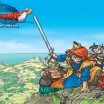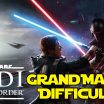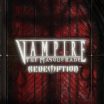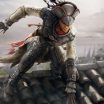Nostalgia Fever: Dragon Quest VIII Journey of the Cursed King

I’ve been a bit of a fan for Level-5 since Dark Cloud 2. They have a distinct style of game art that is apparent in what they work on. They’re a company I always keep an eye out for, like XSeed and arguably Atlus. Dark Cloud and Dark Cloud 2 were both proof they, as a small video game developing and publishing group that they can be strong and independent in making games. Dragon Quest VIII: Journey of the Cursed King was one of three games that helped make them popular, and it also got me hooked to the Dragon Quest series in general.
Dragon Quest VIII: Journey of the Cursed King, as noted in the title, is the eighth game in a long running and very popular RPG series in Japan. Even in continuity circles like 1-3 and 4-6, the games are always different and mostly unrelated in exploring a different world map each time. This game focuses on a quest to find and stop the evil jester who cursed them in the first place; Dhoulmagus. Using a sealed staff within the castle of Trodain, he’s turned everyone there into plant statues, except for the king, princess, and a castle guard. The former two have been cursed into a goblin and horse respectively, while the guard, who is the silent protagonist and main character you control, is somehow unaffected by any curse afflicted on him. On their quest, they meet and enlist the help of a few people that fill out the four man party; Yangus the reformed bandit, Jessica the noblelady mage, and Angelo the black-sheep temple knight. And that’s just the first few hours into the game.
Dragon Quest VIII continues the series with its turn based battle system like the older Final Fantasy games. Each character has a select option of moves you can pick, and when you finish assigning them to do something like attack or defend or cast a spell, who is the fastest in their agility stat can go first. Other stats determine how strong your attacks are and how much damage your enemies can do to you. Basically the point is to kill monsters until their hit points reach zero, which is a very dry way to explain the genre. As such, the point is to level up and get stronger so you can beat monsters and strong bosses on your quest to save your kingdom.
This entry in the series makes the fighting a bit more fun though. Every time you level up your characters, you get skill points that you can distribute and learn new specialized techniques. For example, the hero can get skills to three weapons he can wield (swords, spears, or boomerangs), fisticuffs, or his unique trait of “Courage”. Leveling points in Swords can give him an attack bonus, and he can learn a sword slaying skill towards metal slimes (VERY useful to farm EXP). By the time the main story quest is over, your character levels should be around 60 or 70, with a lot of powerful stats and weapons on their belts. There’s also the pysche up system that every character can do and multiply the damage of their next move up to four levels. It’s better to use only the first two levels or not at all because the later, stronger bosses have a “disruptive wave” move that cancels all buffs, including tension. It’s tactical stuff like these moves that encourage more than just spamming attack or heal spells to beat bosses, and is a nice throwback to the old school boss fights that were hard as they were long.
The journey can be easily side-tracked as there’s so many places to explore and do. You might even go into obscure places to find and collect items, like the mini medals that can be traded for rare items at a certain spot. A fun distraction is the monster arena where you can find and recruit certain wandering monsters (after beating them of course) and then using them to fight in a tournament with other monster teams to earn prizes.
I feel the music deserves mention with the orchestrated numbers played. The overworld song is compelling to fit the world-wide adventure, the boss fights feel genuinely nerving and powerful to match the idea of facing a tough enemy, and the bar music feels cheery and funny for when you get to see a bar fight break out. It all plays out well, and some of them even come with night-time versions to compliment the day time versions. That’s right, this game eventually changes from night to day depending on how long you play. Monsters are generally stronger during night though, so its best suggested to sleep during the night and avoid dying.
Here’s a sample of the music that plays during the overworld; from day to night to riding a Sabrecat.
The art, as usual of Level-5’s games, is breathtaking. The world is vast and wondrous to explore, all done in great detail. That, and Akira Toriyama of Dragon Ball fame is the character designer for the series. This is the first Dragon Quest game to use 3D character models, so it’s pretty cool to see them to move more animatedly than as sprites. And who doesn’t want to raise the hero’s power levels tension level to 100 and look like a Super Saiyan?
Dragon Quest VIII is a long game, with a lot of stuff to do even during the main quest. The story makes it feel long like an epic novel, about a stereotypical evil about to be unleashed and a few plot twists to keep it engaging. It’s very nostalgic of world-in-danger games and for a series to go so long like this proves the Enix team (now merged with Squaresoft to become Square-Enix) still can make the Dragon Quest series well received.
If you still want to play the game, don’t worry about not having a Playstation 2. All you need is an iOS or Android and you can play it on the go. There might be a lot of differences as to how the game transitioned to the mobile app, like no voice acting or lower fps ratings, but at least more people can enjoy what Dragon Quest has to offer.









Leave a Reply